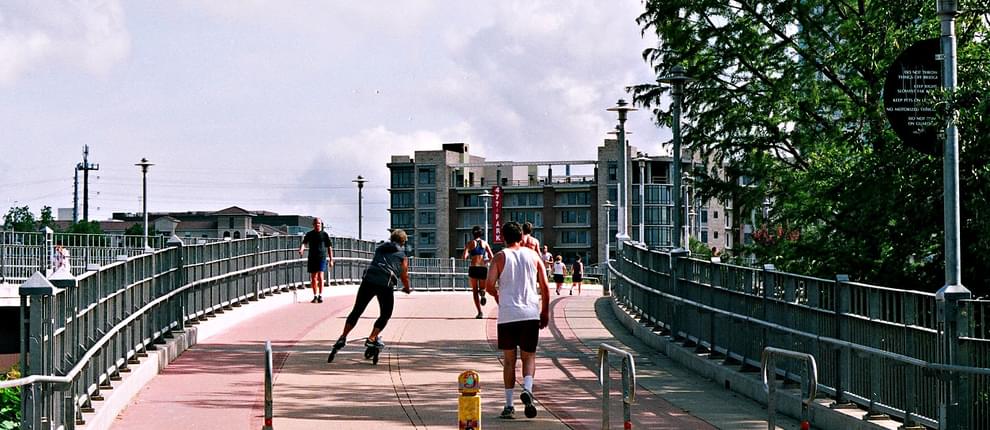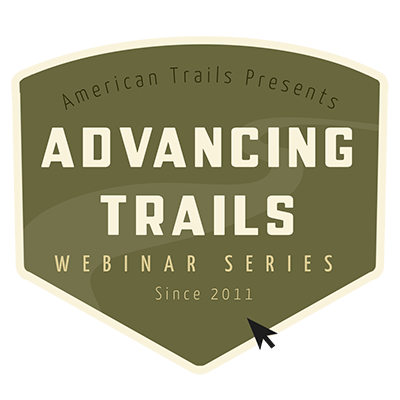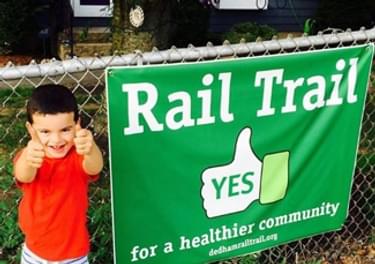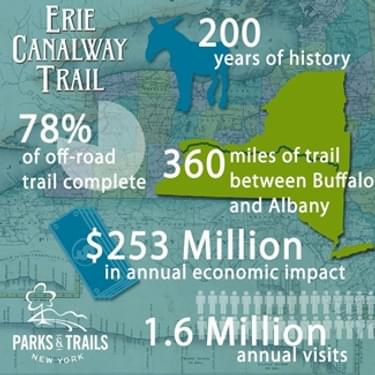




Subscribe to our mailing list for notifications on our latest trainings.

This webinar explores the concept of "Livable Communities" which include trails as a part of the transportation infrastructure.
Presented by:
** This event has passed **
October 20, 2016
10:30 AM to 12:00 AM (Pacific Time) {more time zones}
Cost (RECORDING):
FREE for membersNote:
Closed Captioning is available for this webinar.
Learning Credits are NOT available for this webinar.
This webinar is free. Would you consider a donation to support this webinar?

SAYING "YES" TO TRAILS FOR ACTIVE TRANSPORTATION
WEBINAR OUTLINE
A. What kind of Active Transportation Opportunities are there?
And just what is a “Livable Community?”
Within 125 miles of the Connecticut River Valley of Western Massachusetts there are over 200 rail trail projects underway. What is being built in fragments is in essence probably the densest network of non-motorized transportation opportunities in North America.
One of the definitions of a Livable Community, is what kind of options or infrastructure exists for non-motorized transportation. Infrastructure for not only tourism, but also for biking to school, to work, or for day-to-day errands.
B: Who would be interested in a community with Active Transportation?
Millennials are the largest group of buyers in most marketplaces today in the U.S. Drivers of not only real estate in the 21st century, but how communities are built and become vibrant. They wish to live in places where biking and walking are not unusual or dangerous. Trails advocates and others attending this webinar this will learn why this fundamental shift is important, and most importantly how to help make their communities more walkable and bikeable— and thus more valuable to Millennials. It has been said many times that the indicator of life in a coal mine is the canaries. If you don’t see them there and thriving, you know it is time to get out. The same holds true for a community and or downtown area. If you don’t see walkers/bicyclists as being commonplace, then it is time to either get out, or to fix the problem.
C: In order to transform a community, you’ll need to enlist non-traditional allies.
In a previous webinar, I focused on getting Realtors on board as allies. In this webinar, I will expand on the Realtor angle, and will talk about getting civic organizations, state agencies, and other key stake-holders.

ECONOMIC BENIFITS OF THE ERIE CANALWAY TRAIL
D: Just the facts ma’am. What IS the economic impact?
ECONOMIC BENIFITS OF THE ERIE CANALWAY TRAIL
1. In my "day job" as Realtor, I have had extensive experience in selling houses near to rail trails and greenways in the Hampshire County area of Western Massachusetts. I have seen multiple offers situations (aka "bidding wars") for houses that sit near to rail trails. My most recent sale in this regard is closing on September 22, 2016. This is a small, 1870 era farmhouse that will be selling at $285K. The price is $16K over list price and the house sits 75 feet from the rail trail.
2. Active Transportation Infrastructure Creates More Jobs than Road Infrastructure. A recent study conducted by the Political Economy Research Institute at the University of Massachusetts to investigate the employment impacts of pedestrian and bicycle infrastructure in 11 cities in the U.S. reveals that Bicycle Infrastructure Only, Pedestrian Infrastructure Only and Off-Street Multiuse Trails create the most jobs (i.e. direct, indirect and enhanced jobs) while Road Infrastructure Only creates the least number of jobs.
3. Economic Viability Linked to Active Transportation in Washington D.C.’s Barracks Row Washington D.C.’s Barracks Row experienced a slump in commercial activity as a result of unsafe sidewalks, lack of lighting and automobile traffic. After design improvements were implemented (new sidewalks, street lighting and traffic signals), Barracks Row tripled its economic activity by attracting 44 new businesses and creating 200 jobs.
Craig Della Penna, Associate Broker, The Murphys Realtors, Trailside Team
Northampton, Massachusetts

Craig Della Penna is the Executive Director with Norwottuck Network, an Associate Broker with The Murphys Realtors, Trailside Team, as well as the Owner of Sugar Maple Trailside Inn in Florence, MA.
For 12 years, Craig marketed rail freight and operated New England’s largest and most successful railroad-owned, transloading facility—Railroad Distribution Services, Inc. For seven years, he worked for Rails to Trails Conservancy as their New England Field Representative focusing on the policy end of building rail trails as well as public outreach. Today he is a successful Realtor, the fist realtor in the US specializing in the sale of property near to rail trails.
Having given well over 1,200 lectures in 21 states and Canadian provinces, Craig is one of the countries most sought after motivational speakers on the economic development, tourism, and community development aspect of rail-trails, and their leveraging small amounts of public dollars to redevelop forgotten or derelict lands into treasured places. He is also the author of five books and numerous op-ed/guest editorials on the value of smart growth development, and rail-trails. In their 10th anniversary issue, THE RIDE MAGAZINE named him as the most effective advocate for rail-to-trail conversions on the eastern seaboard. He has also written the forward to three other books on rail trails and has been featured as a case-study in five books for, creative marketing, 21st century branding, etc.
He and his wife Kathleen, operate an award-winning bed & breakfast in a restored, Civil War era house where the restoration was so extreme, it was featured on HGTV. The house sits 8 feet from one of the earliest muni-built rail trails in New England. And within 150 miles of his house sits the densest network of former steam RR corridor in the US. He also is reassembling the longest rail trail in the Northeast. The Mass Central Rail Trail, which runs 100+ miles from Boston to Northampton, Mass. This directly connects with 17 other trails over the 104+ miles. And he publishes the most widely read, free monthly eNewsletter about trails.
We are offering closed captioning for our webinars, thanks to a partnership with VZP Digital. If you are in need of this service, please email us prior to the webinar. An unedited transcript will be sent to all attendees following the webinar.
While we may individually agree (or disagree) in whole or in part with any or all of the participants, the views expressed in these webinars are not necessarily representative of the views of American Trails as an organization or its board and staff. Unless specific situations are noted by presenters, nothing in American Trails webinars should be considered to be interpreted as a standard.
By registering for our webinars, you submit your information to the webinar organizer and associated presenters and sponsors, who may use it to communicate with you regarding this event and their other services. Your organization may also be added to the American Trails Business Directory. You can easily cancel your registration at any time.
1,565 views • posted 02/05/2018
